Table 5.
KOR, MOR, DOR Antagonist Activity of Compounds 29, 46–50, 58–62
| Compound | R | R1 | IC50(nM)a | Selectivity | Calculated Physicochemical Properties50, 51 | ||||
|---|---|---|---|---|---|---|---|---|---|
| KORb | MOR | DOR | MOR/KOR | cLogP | tPSA | cpKa | |||
| 29 | 3.0 | 79 | 4410 | 26 | 1.6 | 71 | 10.5 | ||
| 46 | H | 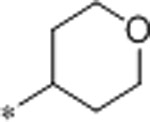 |
3.6 | 1200 | >10000 | 333 | 2.2 | 71 | 10.5 |
| 47 | H | 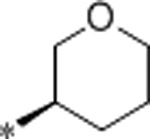 |
1.1 | 1400 | >10000 | 1273 | 3.1 | 71 | 9.9 |
| 48 | H | 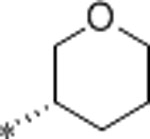 |
2.1 | 6200 | >10000 | 2952 | 3.1 | 71 | 9.9 |
| 49 | H | 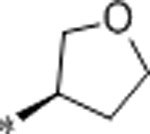 |
2.3 | 6400 | >10000 | 2783 | 2.7 | 71 | 9.8 |
| 50 | H | 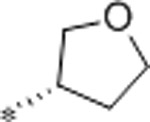 |
2.4 | 6500 | >10000 | 2708 | 2.7 | 71 | 9.8 |
| 58 | Me | 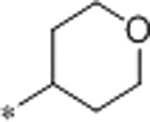 |
0.8 | 110 | 6500 | 138 | 2.4 | 71 | 10.5 |
| 59 | Me | 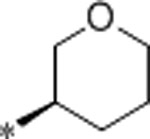 |
0.26 | 100 | 4500 | 384 | 3.3 | 71 | 9.9 |
| 60 | Me | 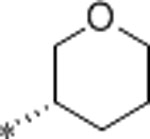 |
0.53 | 400 | >10000 | 754 | 3.3 | 71 | 9.9 |
| 61 | Me | 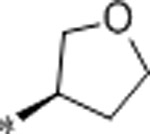 |
0.78 | 1100 | >10000 | 1410 | 2.9 | 71 | 9.8 |
| 62 | Me | 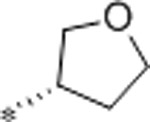 |
0.88 | 1400 | >10000 | 1591 | 2.9 | 71 | 9.8 |
Values are reported as mean of n = 3 determinations.
This assay uses Tango OPRK1-bla U2OS cells which express KOR linked to a GAL4-VP16 transcription factor via a TEV protease site. Stimulation of the KOR by U-50488 causes migration of the β-arrestin fusion protein to the GPCR, and through proteolysis liberates GAL4-VP16 from the receptor. Assay protocols are described in ref 37.
